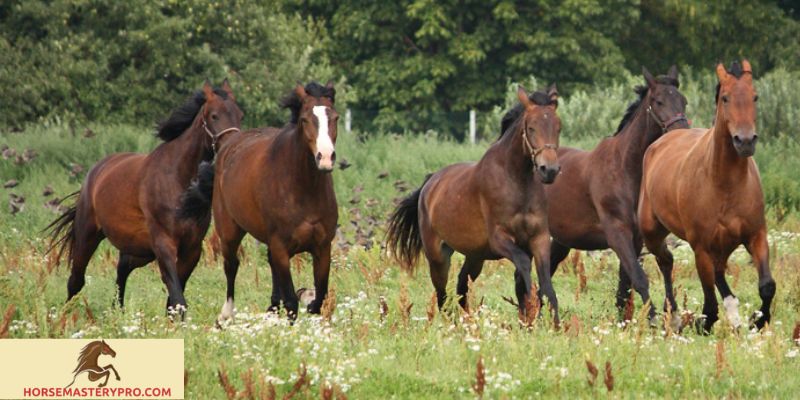Unleash the Power of rich strike horse behavior: Enhancing Equine Well-being, Health, and Social Dynamics. Gain Insight Today!
Introduction
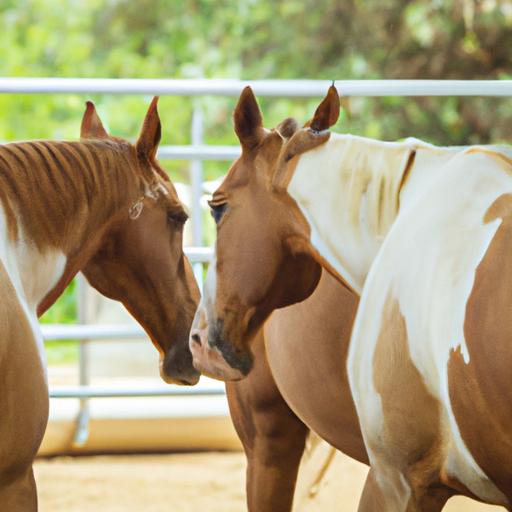
Have you ever wondered about the hidden language that horses communicate with? Picture this – a majestic horse, its hooves striking the ground rhythmically, conveying a profound message. This captivating behavior is known as “rich strike” in the equine world. In this article, we will delve into the depths of rich strike horse behavior, exploring its significance in equine studies and the crucial role it plays in understanding and managing horse behavior.
To comprehend the essence of rich strike behavior, we must recognize its importance in various equine contexts. Horse behavior is a key aspect that horse owners, trainers, and enthusiasts must grasp to foster strong relationships with these magnificent creatures. By unraveling the secrets behind rich strike behavior, we can unlock a deeper understanding of horse communication and social interactions.
Why is understanding and managing horse behavior so vital? Horses are highly social animals, relying on their behavior to express their emotions, establish hierarchies, and form meaningful connections within their herds. As humans interact with horses, it becomes imperative to decipher their behavioral cues effectively to ensure their well-being and develop a successful partnership.
In the subsequent sections, we will explore the multifaceted nature of rich strike horse behavior, uncover its benefits, debunk common misconceptions, and provide guidance on managing and encouraging this behavior. Join me on this enlightening journey as we decode the enigmatic language of horses and enrich our understanding of rich strike behavior.
Stay tuned for Understanding Rich Strike Horse Behavior, where we will delve into the natural behavior and instincts of horses, unveiling the captivating role of rich strike in horse communication and social interactions.
Understanding Rich Strike Horse Behavior
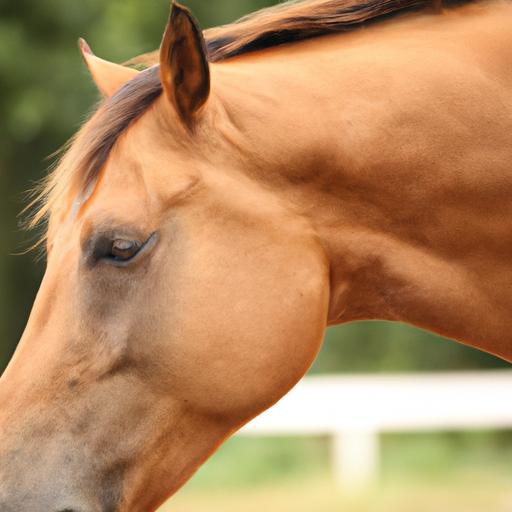
Overview of Natural Horse Behavior and Instincts
To comprehend rich strike horse behavior, we must first grasp the foundation of natural horse behavior and instincts. Horses are prey animals, and their behavior is deeply rooted in their survival mechanisms. They possess a strong flight response, always on guard for potential dangers in their surroundings. This inherent instinct influences their behavior, including rich strike.
The Role of Rich Strike Behavior in Horse Communication and Social Interactions
Rich strike behavior serves as a vital communication tool among horses. When a horse strikes the ground with its hooves, it conveys various messages to its herd mates. It can indicate dominance, assertiveness, or even act as a warning signal. Additionally, rich strike behavior is often observed during courtship rituals, with stallions showcasing their strength and vigor to attract mares.
Within the horse herd, rich strike behavior plays a crucial role in establishing social hierarchies. Through rhythmic hoof strikes, horses assert their dominance and claim their position within the group. This behavior also helps maintain order and cohesion within the herd, as horses establish boundaries and communicate their intentions.
Factors Influencing the Development and Expression of Rich Strike Behavior
Several factors influence the development and expression of rich strike behavior in horses. Firstly, genetics and breed characteristics play a role, as certain breeds may exhibit rich strike behavior more prominently than others. Additionally, the horse’s environment and social interactions shape their behavior. Horses kept in natural herd settings are more likely to display rich strike behavior as they engage in social dynamics and establish their place within the herd hierarchy.
Furthermore, the horse’s individual temperament, age, and level of training contribute to the manifestation of rich strike behavior. Younger horses may display more exuberant and playful strikes, while trained horses may exhibit controlled and deliberate strikes in response to cues from their handlers.
Stay tuned for The Benefits of Rich Strike Horse Behavior, where we will explore how this behavior contributes to the overall well-being of horses and enhances their mental and physical health.
Common Misconceptions about Rich Strike Horse Behavior
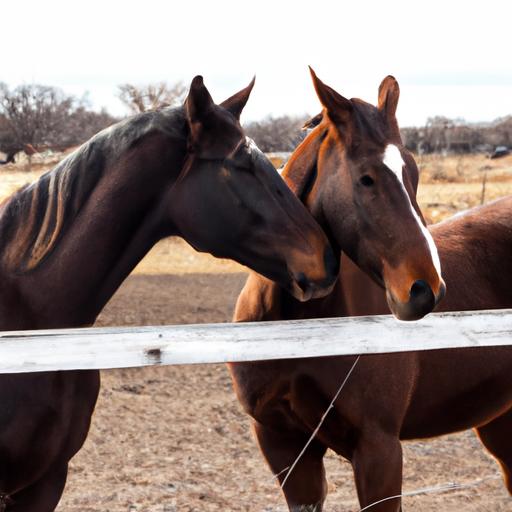
Addressing prevalent myths and misunderstandings surrounding rich strike behavior in horses
When it comes to rich strike horse behavior, there are several common misconceptions that circulate within the equestrian community. Let’s shed light on these misconceptions and separate fact from fiction.
Misconception 1: Rich strike behavior is aggressive and dangerous
One of the most prevalent misconceptions about rich strike behavior is that it is synonymous with aggression and poses a threat. However, this perception couldn’t be further from the truth. Rich strike behavior is a natural expression of a horse’s emotions and communication, which includes pawing the ground with their hooves. It is important to understand that rich strike behavior can have various meanings, such as expressing excitement, impatience, or even a desire to engage with their surroundings. By misinterpreting rich strike as aggression, we may hinder our ability to comprehend the horse’s intentions accurately.
Misconception 2: Rich strike behavior indicates disobedience
Another misconception is that horses engage in rich strike behavior as a sign of disobedience or defiance towards their handlers. However, this assumption overlooks the inherent nature of horses. Rich strike behavior is a natural instinct for horses and can stem from a range of emotions, including curiosity, anticipation, or frustration. It is crucial to approach rich strike behavior with an open mind, considering the broader context and the horse’s individual personality. By dismissing it as disobedience, we may miss valuable opportunities to connect and understand our equine partners.
Debunking misconceptions that may hinder effective horse management and training techniques
Dispelling these misconceptions is vital for effective horse management and training. By debunking these myths, we can foster a better understanding of rich strike behavior and its implications.
Truth 1: Rich strike behavior is a form of communication
Rather than perceiving rich strike behavior as aggressive or disobedient, it is essential to recognize it as a means of communication for horses. Pawing the ground can signify their emotional state, whether it’s excitement, anticipation, or even discomfort. By acknowledging this behavior as a communication tool, we can better interpret the horse’s needs and respond appropriately, ultimately strengthening the human-horse bond.
Truth 2: Proper training and management can shape rich strike behavior
Contrary to the misconception that rich strike behavior cannot be altered, proper training and management techniques can influence how horses express this behavior. By providing horses with a well-structured environment, regular exercise, mental stimulation, and positive reinforcement, we can guide their behavior towards more desirable forms of communication. Understanding the underlying reasons behind rich strike behavior allows us to address any potential issues and enhance the horse’s overall well-being.
By dispelling these misconceptions and embracing a more accurate understanding of rich strike behavior, horse owners and trainers can create an environment that fosters effective communication, trust, and mutual respect.
Stay tuned for Managing and Encouraging Rich Strike Horse Behavior, where we will explore strategies to create an environment that promotes rich strike behavior in domesticated horses.
Managing and Encouraging Rich Strike Horse Behavior
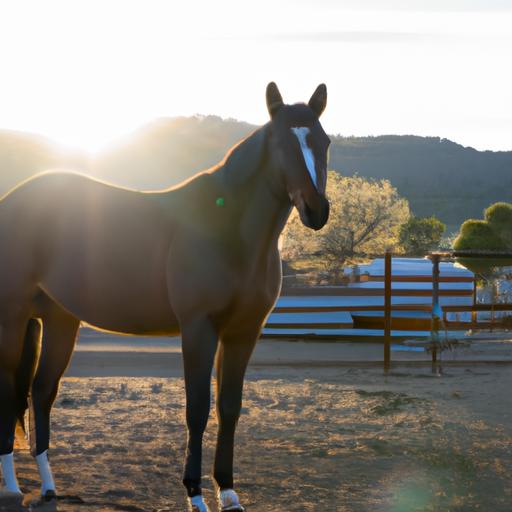
Creating an Environment that Promotes Rich Strike Behavior
Creating an environment that encourages rich strike behavior in domesticated horses is crucial for their overall well-being. By mimicking natural conditions, we can provide horses with the space and freedom they need to express this innate behavior. Here are some strategies to consider:
- Ample Space and Turnout: Horses require sufficient space to move freely and engage in rich strike behavior. Ensure that your horse has access to spacious pastures or paddocks, allowing them to trot, canter, and gallop, enabling the natural expression of rich strike behavior.
- Social Interaction Opportunities: Horses are social animals and thrive in the company of their herd. Whenever possible, provide opportunities for socialization with other compatible horses. This encourages rich strike behavior as horses establish social hierarchies, engage in play, and communicate through movement.
Fostering Positive Interactions and Engagement
Building a strong bond and trust with your horse is paramount for fostering rich strike behavior. By creating positive interactions, you can encourage your horse to engage and communicate more effectively. Consider the following tips:
- Consistent and Gentle Training: Avoid harsh training methods that can hinder your horse’s willingness to engage in rich strike behavior. Utilize positive reinforcement techniques and reward your horse for desired behaviors. This builds trust and encourages your horse to be more expressive.
- Engaging in Enrichment Activities: Keep your horse mentally stimulated by introducing various enrichment activities. This can include obstacle courses, trail rides, or even play sessions with toys. By providing mental and physical stimulation, you encourage your horse to exhibit rich strike behavior as a means of expressing their contentment and enthusiasm.
Importance of Allowing Natural Behaviors
To truly encourage rich strike behavior, it is essential to provide opportunities for horses to engage in natural behaviors. Horses have an innate need to move, explore, and express themselves. Here’s why it matters:
- Physical and Mental Health Benefits: Allowing horses to engage in natural behaviors, including rich strike, helps maintain their physical and mental well-being. Regular exercise and the expression of natural behaviors reduce the risk of behavioral issues, such as anxiety and boredom-related vices.
- Enhanced Communication and Bonding: When horses are allowed to express themselves naturally, it enhances their communication skills and strengthens the bond between horse and human. Rich strike behavior becomes a means of communication and connection, enabling a deeper understanding and trust.
By implementing these strategies and acknowledging the importance of natural behaviors, we can create an environment that fosters rich strike behavior in horses. Remember, allowing horses to be horses is the key to unlocking their true potential and building a harmonious partnership.
Stay tuned for Conclusion, where we will recap the key points discussed in this article and highlight the significance of understanding and respecting rich strike horse behavior for successful horse management and welfare.
Conclusion

In conclusion, the enigmatic language of rich strike horse behavior holds profound significance in the realm of equine studies. By understanding and managing horse behavior, we can forge stronger connections with these majestic creatures and ensure their well-being.
Throughout this article, we have explored the multifaceted nature of rich strike behavior. We have witnessed how it contributes to the overall well-being of horses, promoting their mental and physical health. The rhythmic strike of their hooves serves as a form of self-expression, allowing horses to release energy and establish a sense of harmony within their being.
Furthermore, rich strike behavior plays a pivotal role in enhancing social dynamics within horse herds. It serves as a means of communication, allowing horses to convey their intentions, establish hierarchies, and foster meaningful connections. By embracing and respecting this natural behavior, we can create an environment that encourages positive social interactions among horses.
As horse enthusiasts, trainers, and caretakers, it is our responsibility to provide opportunities for horses to engage in rich strike behavior. By allowing them to express their innate instincts and behaviors, we can foster their overall well-being and strengthen the bond between humans and horses.
At Horsemasterypro.com, we believe in the holistic approach to horse management, valuing the significance of rich strike behavior in equine welfare. Join us on this journey of understanding and unraveling the secrets of horse behavior, as we strive to create a harmonious and fulfilling experience for both horses and humans.
Together, let’s embrace the enigmatic language of rich strike horse behavior and embark on a path of profound connection and understanding.
Stay tuned for more enlightening articles on horse behavior and horsemanship at Horsemasterypro.com – your trusted source for equine knowledge and expertise.

